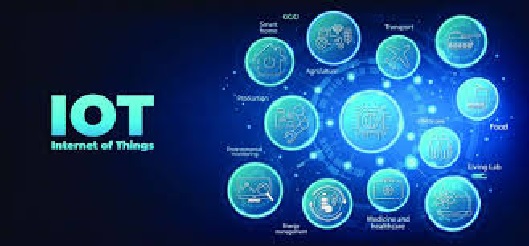The Internet of Things, or IoT, has become a digital reality that is improving daily lives. This digital transformation puts IoT at the forefront of another futuristic leap. Even as I write a blog post, I am surrounded by smart devices, making my office, well, smart. So, without ado, let’s talk about how IoT devices are shaping the modern internet.
The Ubiquity of IoT Devices
Remember while getting to the internet implied being connected to a bulky personal computer? Those times are long gone. Today, the internet is integrated into our day-to-day routines through different items. Nowadays, connected cars that make our commutes easier and smart fridges that can order groceries are commonplace, often going unnoticed in their integration into our routines.
I, as of late, visited a companion’s smart home powered by fiber internet service and was awe-struck by how consistently IoT was integrated into regular daily lives. A coffee maker brewed coffee automatically when the alarm went off in the morning, and a security system could be controlled from anywhere in the world. It seemed like a brief look into what’s in store.
The Backbone of Smart Cities
The Internet of Things’s influence extends beyond our homes and into urban landscapes, making cities “smart” environments. Take, for instance, Barcelona. The city utilizes IoT sensors to screen air quality, advance waste administration, and direct drivers to accessible parking spaces. This isn’t just about comfort; it’s tied in with creating more practical and decent metropolitan spaces.
Recently, I went to Barcelona and was in awe of how this glorious city ran. I had no idea that IoT was orchestrating this urban harmony in the background.
Revolutionizing Healthcare
Healthcare is one of the most promising IoT applications. Take wearable devices, for example. With these devices, caregivers can track and monitor patients’ vital signs in real-time. These devices made it possible for caregivers to take prompt action in saving the lives of their patients, especially those who are in ventilators. These instances highlight the significant impact of this technology.
The Role Of Industrial Internet of Things (IIoT)
The (IIoT) is revolutionizing the industrial sector, even though mostly it’s commonly used in consumer applications. Predictive maintenance, supply chain optimization, and overall efficiency have never been possible before thanks to this technology.
Recently, going to a smart factory was like watching a carefully planned performance. Machines communicated consistently, changing manufacturing in light of real-time data. The manufacturing plant director noticed that downtime had been cut by 30% since embracing IIoT equipment — a striking improvement.
The Need for Standardization
The lack of standardization in the IoT industry is a major obstacle. With various conventions and stages, guaranteeing device interoperability can be tricky. Suppose buying a smart light bulb just to find it contrary to your smart home system — an all-too-normal dissatisfaction for early adopters. Although universal standards are the goal of industry leaders, progress is slow. I look forward to the day when all smart devices, regardless of brand or protocol, can interact with one other with ease.
The Impact of 5G
5G is the latest generation of wireless internet technology that has made possible for many use cases with its ultra-low latency and increased bandwidth, powering multiple devices at the same time. At a new tech gathering, I watched a demo displaying 5G-empowered continuous far-off medical procedures utilizing robotic arms. The accuracy and responsiveness were surprising, uncovering the capability of what’s to come.
The Future of IoT
IoT will continue to shape our digital experiences in the future. We are heading toward a future where everything is interconnected, powered by fiber internet service, from our cities to right down to our clothing. AI and machine learning will most likely play a larger role in interpreting the vast amounts of data produced by IoT devices.
Imagine an environment that adjusts to your requirements and preferences, learning and evolving over the long run. Edge computing is one more trend ready to influence IoT, handling data nearer to its source to lower latency and to become more responsive for critical applications.
Conclusion
IoT is not going anywhere. It will shape the way we interact in our digital world.
As the IoT continues to evolve and become more sophisticated, this revolutionary technology is bringing change that will shape the modern world as we know it.
Some of the ways of revolutionary change include smart home devices that improve your daily lives, streamlining the manufacturing processes, and building smarter. One thing is for certain: the revolutionary IoT technology is not going anywhere but up and beyond.
As we further build innovation in this technology, our top priority should meet our masses’ needs. The true success of IoT will ultimately be determined by how it affects our lives and the world.







